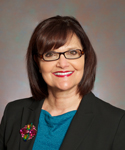These are difficult times for rheumatologists. We have seen sharp declines in face-to-face patient visits since the COVID‑19 pandemic began. Many of us have questions about the best ways to maintain employee and patient safety while keeping our practices afloat and continuing to provide optimal care. The volunteer leaders at the ACR continue to care…







